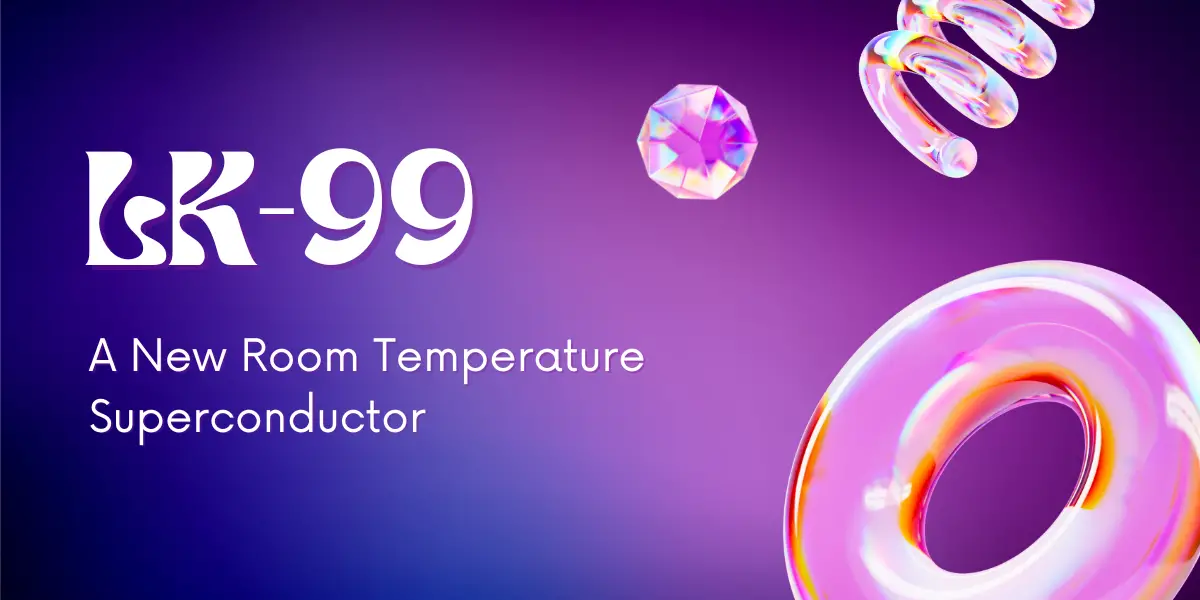LK99 -- A New Room Temperature Superconductor?

The realm of physics and materials science is no stranger to groundbreaking discoveries, but few have the potential to revolutionize our world as much as a room-temperature superconductor. The recent announcement of LK-99, a material claimed to exhibit this extraordinary property, has sparked excitement and intrigue in equal measure. This article delves into the specifics of LK-99, its discovery, and the potential implications of this development.
What is LK-99?
LK-99 is a material that has recently entered the scientific spotlight due to claims of its ability to exhibit superconductivity at room temperature. Superconductivity, a quantum mechanical phenomenon, is a state where a material can conduct electric current with absolutely no electrical resistance. This is a property typically observed in certain materials when they are cooled to temperatures nearing absolute zero. The assertion that LK-99 can display this property at room temperature, if substantiated, would represent a monumental leap in the field of superconductivity.
Key Features of LK-99
- Room Temperature Superconductivity: The most significant and exciting feature of LK-99 is its alleged ability to exhibit superconductivity at room temperature. This is a major breakthrough as the vast majority of known superconductors require chilling to extremely low temperatures to function, often necessitating the use of liquid nitrogen or helium.
- Atmospheric Pressure Operation: Another notable feature of LK-99 is its reported ability to operate at atmospheric pressure. Many high-temperature superconductors require high pressures to maintain their superconducting state, which can limit their practical applications. If LK-99 can indeed function at atmospheric pressure, it would be a significant step towards practical, real-world applications of superconductors.
- Synthetic Material: LK-99 is not a naturally occurring substance but a synthetic material. It was first synthesized in 1999 by the researchers Lee and Kim, from whom it derives its name.
Who developed LK-99?
The development of LK-99 is credited to a group of Korean researchers, including the eponymous Lee and Kim. The discovery was initially published on a preprint server, causing a stir in the scientific community due to the far-reaching implications of a room-temperature superconductor.
What does the appearance of LK-99 mean?
The emergence of LK-99, if its properties are confirmed, could signify a paradigm shift in numerous industries. Superconductors have a myriad of applications, from the production of powerful magnets used in MRI machines to efficient power transmission lines and advanced digital circuits. A room-temperature superconductor could dramatically improve the efficiency of these applications, leading to significant energy savings and potentially transforming our energy infrastructure.
What industry changes will the emergence of LK-99 bring?
The potential impact of LK-99 is vast and could bring about significant changes in several industries.
- Energy Sector: In the energy sector, LK-99 could lead to more efficient power transmission. Current power transmission lines lose a significant amount of energy due to electrical resistance. Superconducting power lines could drastically reduce these losses, leading to lower energy costs and a more sustainable energy infrastructure.
- Electronics: In the field of electronics, LK-99 could enable the development of faster and more efficient digital circuits. Superconducting circuits could potentially operate at high frequencies with minimal energy loss, leading to more powerful and energy-efficient electronic devices.
- Transportation: In transportation, LK-99 could make technologies like the Hyperloop, which relies on magnetic levitation, more feasible. Superconducting magnets could provide the necessary magnetic fields for levitation and propulsion, all while operating at room temperature and atmospheric pressure.
China Huazhong University of Science and Technology successfully verified LK-99
The claims about LK-99 have been independently verified by researchers at the China Huazhong University of Science and Technology. This independent verification lends credibility to the initial findings and suggests that LK-99 could indeed be a room-temperature superconductor. However, it’s important to note that further verification from other independent research groups is necessary to fully confirm these findings.
See more:5 Best AI Recipe Generators in 2023
Superconducting concept stocks collectively rose
The announcement of LK-99 has had a noticeable impact on the stock market, with shares in companies involved in superconducting technologies experiencing a collective rise. This reflects the potential economic implications of the discovery. If LK-99 is confirmed to be a room-temperature superconductor, it could lead to a surge in demand for superconducting technologies, benefiting companies in this sector.
Also read:T2 Adds DMs to Compete with Twitter(X),Threads and Bluesky
Conclusion
The discovery of LK-99 is potentially a game-changing development in the field of superconductivity. However, it’s important to note that the claims about LK-99 are still being verified and scrutinized by the scientific community. If these claims hold up under further examination, we could be on the cusp of a new era in energy efficiency and technological advancement. The potential applications of a room-temperature superconductor are vast, and the emergence of LK-99 could mark the beginning of a new chapter in our technological evolution.

